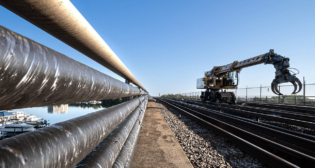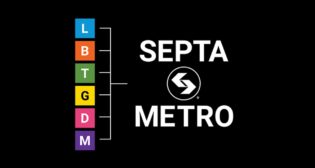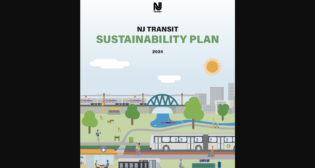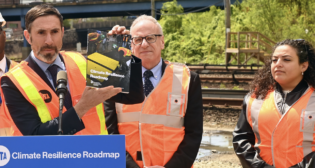
Transit Briefs: San Diego MTS, CTA, Tri-Rail, MDOT MTA, AECOM
Written by Carolina Worrell, Senior Editor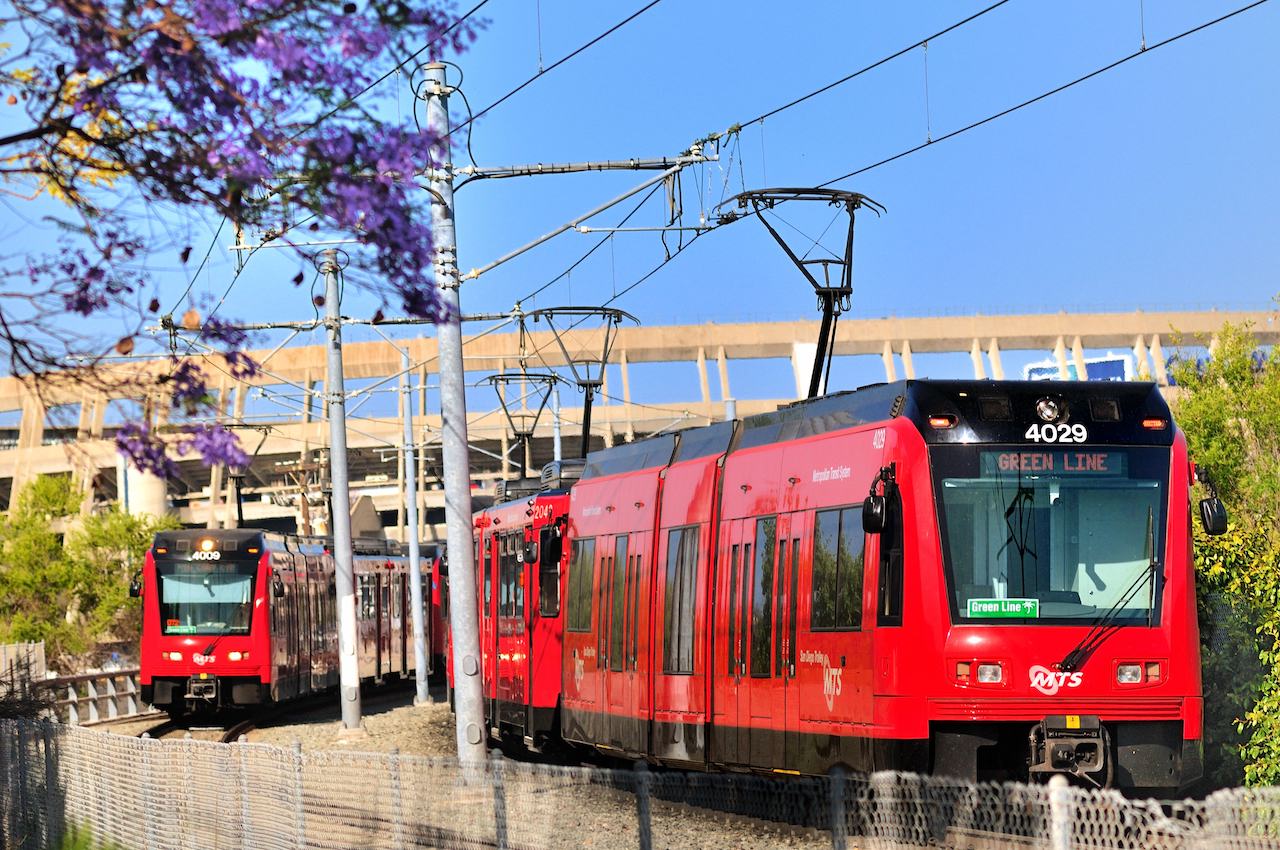
(San Diego MTS)
The San Diego Metropolitan Transit System (MTS) Board approves a $243 million capital budget for transit improvements. Also, the Chicago Transit Authority’s (CTA) new video series addresses rider questions; Tri-Rail’s ridership recovers; the Maryland Department of Transportation Maryland Transit Administration (MDOT MTA) invites applicants for Red Line Community Advisory Team (CAT); and AECOM publishes a new high-speed rail report.
San Diego MTS
The San Diego MTS Board of Directors on March 14 unanimously approved a $243.3 million capital improvement program budget for Fiscal Year 2025.
As part of the agency’s $243.3 million Capital Improvement Program budget—the largest in the agency’s history—78% will help maintain bus and rail systems in good condition, followed by facility and construction, rail infrastructure improvements, and other major initiatives. In total, 64 projects will be funded by the Capital Improvement Project.
Top funding allocations include:
- $69.5 million: Rail infrastructure improvements and maintenance.
- $58.3 million: 38 new buses including 10 battery-electric and 28 compressed natural gas.
- $38.8 million: Overhead charging infrastructure at each existing division to support conversion to an all-electric bus fleet.
- $21 million: 22 new Trolley vehicles. Funding will be added to the $71.7 million previously funded to replace aging vehicles in the fleet.
- $21.3 million: Trolley and bus facilities maintenance and construction, and construction projects for passenger facilities at transit centers.
“Prioritizing this capital investment in our transit agency will help increase ridership and keep San Diego’s transit system in good working condition with modern amenities and well-maintained vehicles,” said Stephen Whitburn, MTS Chair and San Diego City Councilmember, District 3. “This is the largest capital improvement program in agency history, and it speaks to our growth and the commitment our region has for transit.”
The full list of projects can be viewed on the Board of Directors agenda packet (Item 20, p. 254).
CTA
Coming soon to social media channels is a new video series, “Ask CTA”, aimed at answering questions from riders on the agency’s system.
The first videos in the series answer questions from bus and rail customers including:
- What’s being done to improve security?
- Why do “ghost” buses/trains happen?
- What is the CTA doing to address homelessness on the system?
- How did the CTA adopt their color system?
- When will [the Red Line Extension Project] be done?
- Why does bus bunching happen?
Each video, which about a minute or two in length, includes a transit rider asking their question with a CTA employee in the relevant department providing a response. This, the agency says, marks the first of many more installments of the video series dedicated to providing riders with answers to their questions. All production work—from interviewing, filming, and editing—is performed by CTA personnel, who will continue to head out on the system to capture questions.
These videos, CTA says, are intended to provide riders an opportunity to learn a little more about the challenges the agency faces, and how they are addressed, and each video will be available on a dedicated webpage on CTA’s website. This new series builds on previous customer-education efforts, including “When Things Go Wrong,” a CTA webpage that explains how the agency responds to delays and unplanned disruptions to service.
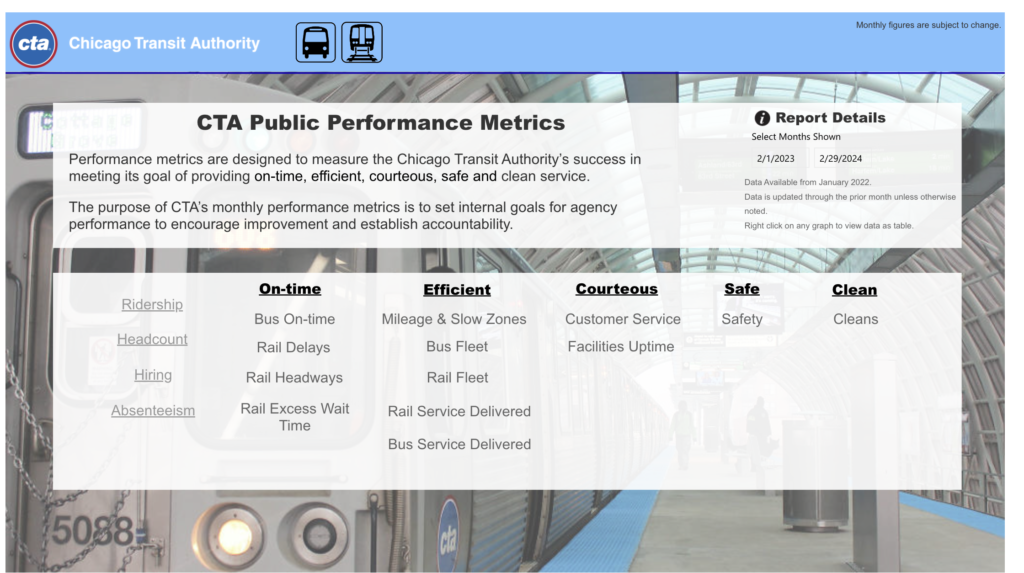
“Our riders are engaged and interested in how the system works and how we are working to improve,” said CTA President Dorval R. Carter, Jr. “These videos feature questions from real riders on system that are answered by transit experts here at CTA. This is the latest in a series of measures we’ve launched recently to improve communication with our riders and the public, including our interactive performance metrics dashboard, because real customer service is a two-way street.”
The first “season” in the series will be posted to CTA’s social media accounts, YouTube channel, and CTA’s website weekly beginning March 20.
Tri-Rail
South Florida Regional Transportation Authority (SFRTA), the operating agency for Tri-Rail, recently reported that the commuter rail system averaged 15,000 weekday riders in the month of February 2024. This, SFRTA says, is the first time the average weekday ridership was more than 14,000 in any month since February 2020, exactly four years ago, when Tri-Rail ridership was regularly at 15,000 daily rides.
Tri-Rail services also experienced the highest average for weekend ridership in February 2024, nearing 8,000 passengers on Saturdays and Sundays. The system set a new weekend record with 10,129 passengers riding the trains on Saturday, Feb. 24, on the day the agency held its annual Rail Fun Day event, and 7,797 passengers on Sunday, March 10, the date of the Calle Ocho Music Festival. Both days, SFRTA says, represent the highest ridership on each respective day for the system.
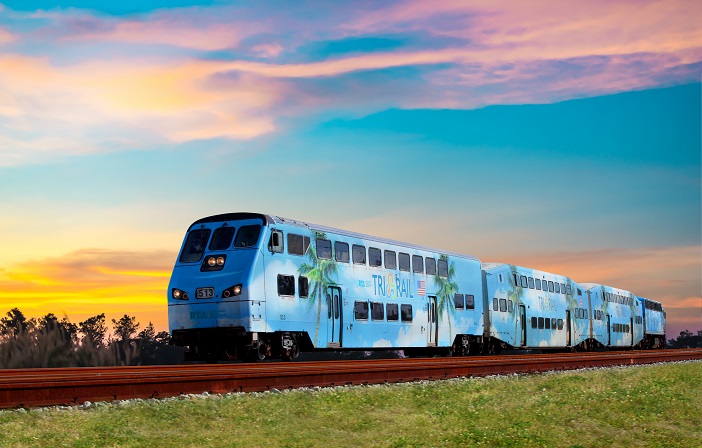
“We are super excited that more and more people are realizing the value that Tri-Rail provides to our communities,” said SFRTA Executive Director David Dech. “It’s not only the best way to get to the airport and avoid I-95 every day, but also to get you to a wide variety of major events that we get to enjoy in South Florida.”
Tri-Rail recently expanded service by including a stop at MiamiCentral Station, providing passengers with a new connection to downtown Miami. The new service was introduced on Jan. 13, and has grown from 100 to more than 300 daily passengers in its first few weeks of service, with an opportunity to continue to grow as more passengers become accustomed to the new service, according to the agency.
One of the agency’s pushes to promote the new station is reengaging its partnership with the Ultra Music Festival on March 22, 23 & 24, to offer special train service at the conclusion of each night’s concert for the weekend-long event, as done in previous years. The difference in 2024 is that a Tri-Rail train will depart directly from downtown Miami.
“There is room onboard Tri-Rail for more people looking to avoid traffic jams, unpredictable car expenses and fluctuating gas prices,” added Dech. “And we will keep working on opportunities to provide the best possible service so more people can enjoy their travels around town by train.”
MDOT MTA
MDOT MTA announced March 14 that it is seeking the diverse perspectives of Baltimore-region community members, business owners and other stakeholders impacted by the development of the Red Line to participate in the agency’s Community Advisory Team (CAT).
Those selected will provide input and feedback into the planning and design processes for the Red Line, a high-frequency, high-capacity transit line for the Baltimore Region, relaunched by Governor Wes Moore in June 2023. The Red Line addresses a major gap in east-west transit service between Bayview and Woodlawn, through downtown Baltimore City.
“The Red Line project is a once-in-a-generation opportunity to build stronger, more equitable and prosperous communities throughout greater Baltimore,” said Maryland Transit Administrator Holly Arnold. “The Community Advisory Team will be a valuable resource to ensure we receive comprehensive input from community members who live, work and invest along the corridor and that our efforts to engage with the public are effective.”
According to MDOT MTA, the CAT will serve as a vital link between the Red Line project team and the communities along the proposed corridor. Community members selected to serve on the CAT will support the Red Line project team to develop “meaningful, relevant community engagement and bring diverse community perspectives, context and priorities forward.” Additional details on the CAT and member responsibilities can be found here.
Baltimore-area community members interested in serving on the Red Line CAT are encouraged to submit a Statement of Interest. Submissions will be accepted through April 3, 2024, and selections are expected to be complete by mid-May.
AECOM
Infrastructure consulting firm AECOM announced March 13 that it has launched its new report, From Vision to Reality: a new high-speed rail playbook, which presents “original quantitative and qualitative research conducted with 112 senior decision-makers involved in high-speed rail (HSR) projects globally.”
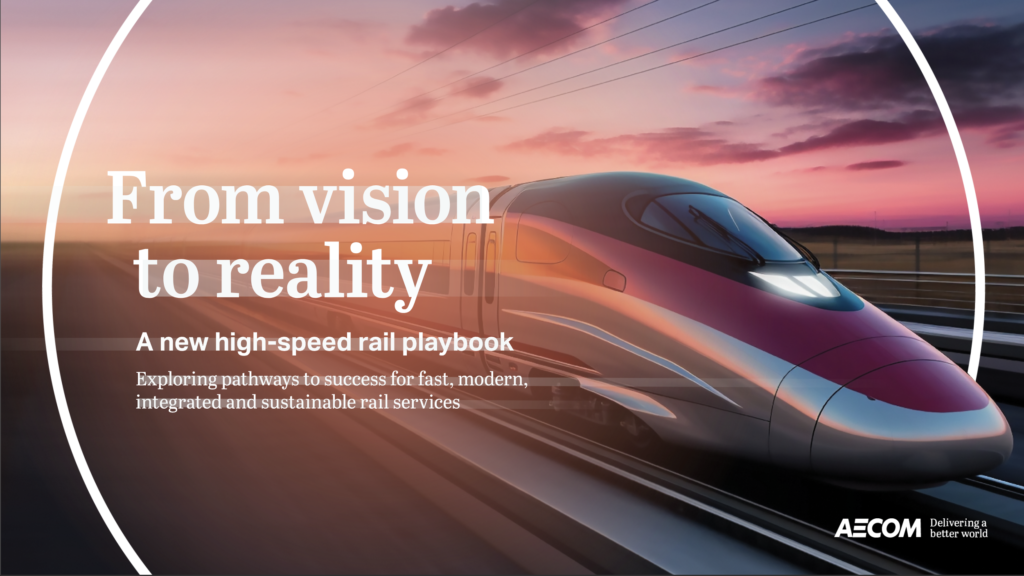
Informed by AECOM’s 30-year expertise in HSR design and delivery, the report, which is part of AECOM’s ongoing Future of Infrastructure thought leadership series, investigates the latest industry trends and outlines best practices for the successful delivery of HSR systems around the world.
According to AECOM, research presented in the report found that “economic growth, technology, adaptability and on-time completion prove the most critical success factors in the first year of HSR operation. In the five-to-ten-year period post launch, top success factors shift to passenger experience and adaptability while the impact of project delays becomes less important.”
According to the report, success factors also varied widely by region:
- Europe’s primary success factors included a reduction in air/vehicle traffic, use of the latest technology, and future adaptability.
- In North America, key success factors were regional economic growth, use of the latest technology, and passenger experience.
- For the Asia and Pacific region, on-time completion, low environmental impact, and social benefits comprised the top key success factors.
“Through our extensive experience guiding clients across all stages of HSR delivery, we are finding that the global push toward the energy transition is propelling significant interest in this low-carbon mode of transportation,” said AECOM CEO Troy Rudd. “With such unprecedented demand and new funding opportunities worldwide, we’re excited to present this first-of-its-kind playbook to provide a comprehensive view of best practices that can accelerate the growth of HSR globally.”
The report, AECOM says, takes both a global and region-specific approach to a spectrum of key HSR topics, including passenger experience, economic and social benefits, emissions reductions, regulatory and political factors, land use and funding concerns. Data is presented over immediate and five-to-ten-year timeframes and is supported by interviews from leaders across major HSR organizations, including Adif, High Speed 1, Brightline, the California High-Speed Rail Authority (CHSRA), NEOM, and China Railway Construction Company International (CRCCI).
“Our integrated transportation networks continue to evolve rapidly, and high-speed rail has a crucial role to play in this ongoing transformation,” said AECOM President Lara Poloni. “It’s our hope that, through better understanding of the opportunities and challenges attached to these mega projects, existing networks can expand, and proposed networks can move from vision to reality, helping create thriving, connected communities.”
In response to industry headwinds, the report explores several best practices to streamline HSR delivery and facilitate the expansion of HSR networks globally:
- Long-term decisive political leadership.
- New funding models.
- Greater trans-regional and international cooperation.
- New design and construction.
- Increased collaboration and industry outreach.
- User-centric design and engagement.
- Design to cost (DTC) and disciplined cost control.
The full report is available here.
